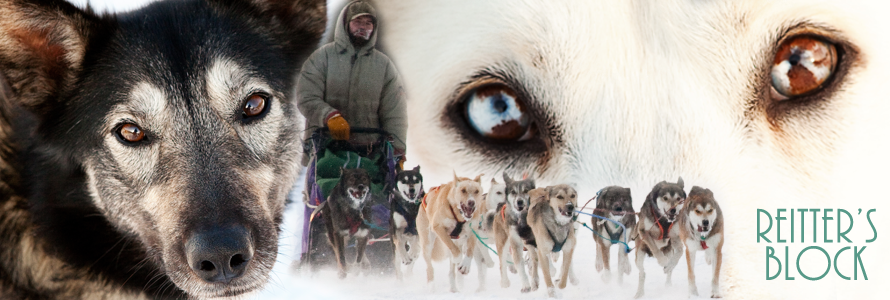With 2023 marking 50 years of the Last Great Race, and the 51st running, it's high time we look back on the mushers who had that magic ride into Nome in first. For the next few weeks as we count down to March 4, we'll highlight the 24 Champions of Iditarod. That's right, 50 races with 24 names on the Champion list. Just as more folks have climbed Everest than have run Iditarod, the Champions list is surprisingly short.
The Yukon Fox
 |
| Photo from KTUU Sports archives. |
Peters had a dream of running the Iditarod and had studied the mushers from the last two races and everything about their runs, but he hadn't planned on entering in 75. With someone willing to foot the bill just days before the start, he headed to Ruby to train and prepare for a last minute entry (something that would not happen today). As Emmitt trained his team his mother - worried her son would freeze to death - and sisters worked tirelessly to make sure he stayed warm on the trail. The village of Ruby chipped in and sewed booties for the dogs. They say it takes a village to raise a child, it also takes a Village to outfit an Iditarod musher.
In 1974, Peters loaned his lead dog Nugget to Carl Huntington and they won the Iditarod. In 1975, Peters would run with Nugget in lead and she would be one of the key factors to his win. Nugget gained a reputation in her years as having the best memory of a dog - and musher. While Emmitt was brand new to the trail, Nugget knew where she was going and how to get there. She was a tough dog - one who refused to wear booties - and by all reports incredibly smart. In fact, Nugget would be a key component to the win.
Peters had decided to take his mandatory 24 in Ruby. Back in those days there were no rules about where one could stay on the trail/in checkpoints. Emmitt decided to 24 in his home village so that he could sleep in the comforts of home. Problem was his mother - like any mother would - did not understand the 24 hour rule and so whenever a team would come into the checkpoint or leave, she would come and wake a resting Peters up to tell him he had to leave. After his layover the musher left dog tired with a well rested and re-energized team.
As the story is told in the book Iditarod: The First Ten Years, Emmitt began to fall asleep on the runners so he climbed into his sled bag and slept as his trusty lead dog Nugget lead the team down the trail. Emmitt would later find out that he passed two teams while sleeping in his sled!
Peters would be credited with starting the more modern race's run-rest strategy. Instead of going until everyone was tired to rest, he stuck with a schedule: run four hours, rest four hours. Sure, he was getting passed by his competitors as he rested, but his dogs were never too tired to give more when he asked. As decades pass the run rest schedule changes - it's now about 6 to 6, or mushers make the rule of "no more than 50-100 miles" depending on the portion of the trail. But it is key to never let the team get over tired. AND that means four hours of rest for the dogs, the musher must spend that time caring for the dog. Emmitt would be quoted as saying "you have to take care of the dogs better than you. They dogs are the main machine, doin' all the work. You gotta take care of them first."
Peters would run the race a handful of times after his win, but he would only come so close as second. He is also the last rookie to win the race. As he came in towards Nome, a radio DJ believed him to be another musher. Emmitt corrected him saying something like "no, that guy's behind me," and so the DJ began calling Peters the Yukon River Fox - which has since been shortened to "The Yukon Fox".
Emmitt is still considered one of the greatest of Iditarod history for how he managed to not only beat the odds, but he shaved a ton of time off the record finish time. He dropped nearly six days off the champion finishing time. All because of his dog care strategy, and a dog named Nugget.
Emmitt Peters passed away April 2, 2020 at his home in Ruby.
If you're an Iditarod Insider, you can view a clip of Emmitt Peters talking about Nugget from an interview in 2016(14?). You can also read the Anchorage Daily News' obituary for Peters here.
What are you thoughts on this new series for the blog? Comment below!
Like what you see and want it to continue, you can "buy me a pizza" as a way to support the costs of running the blog.


